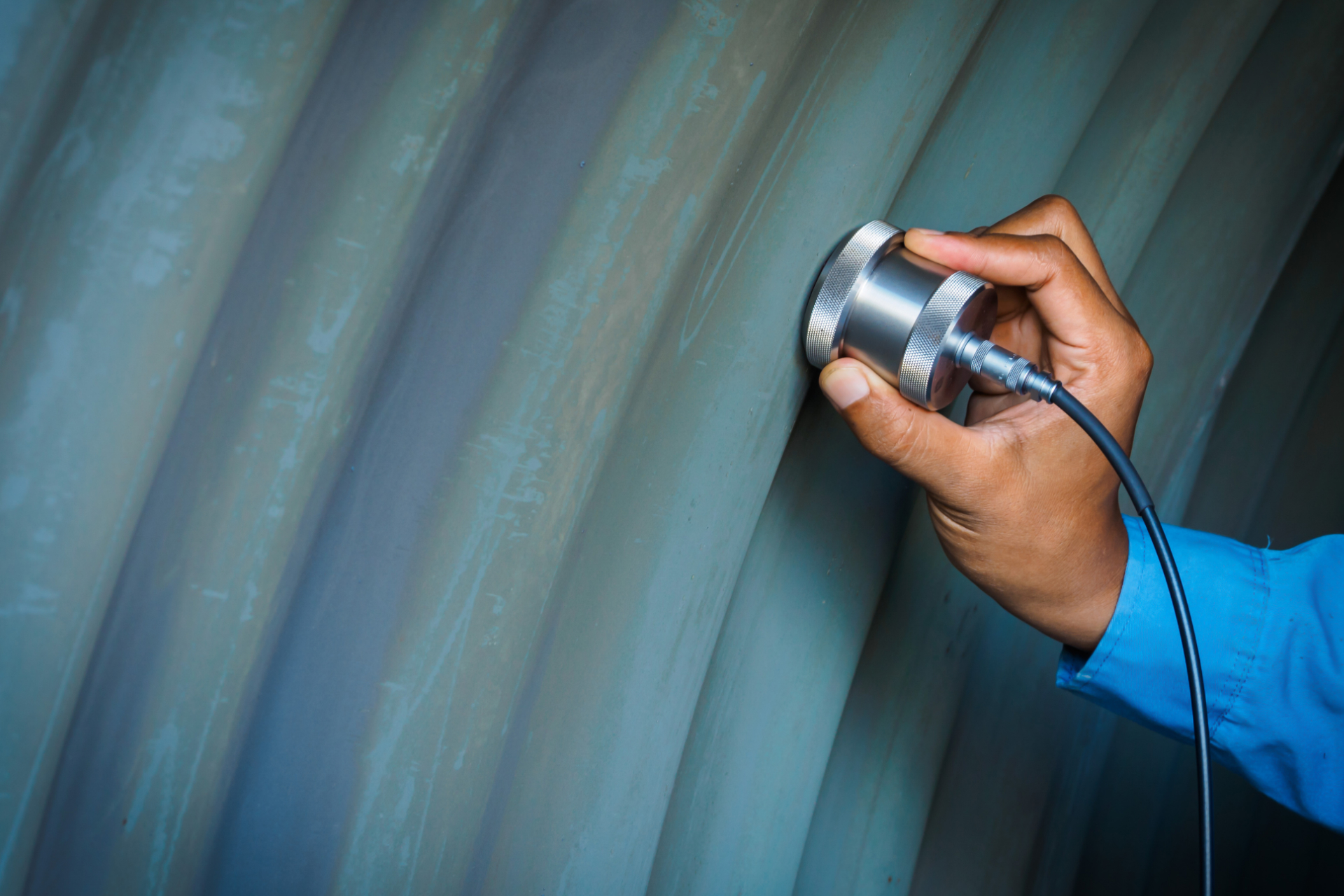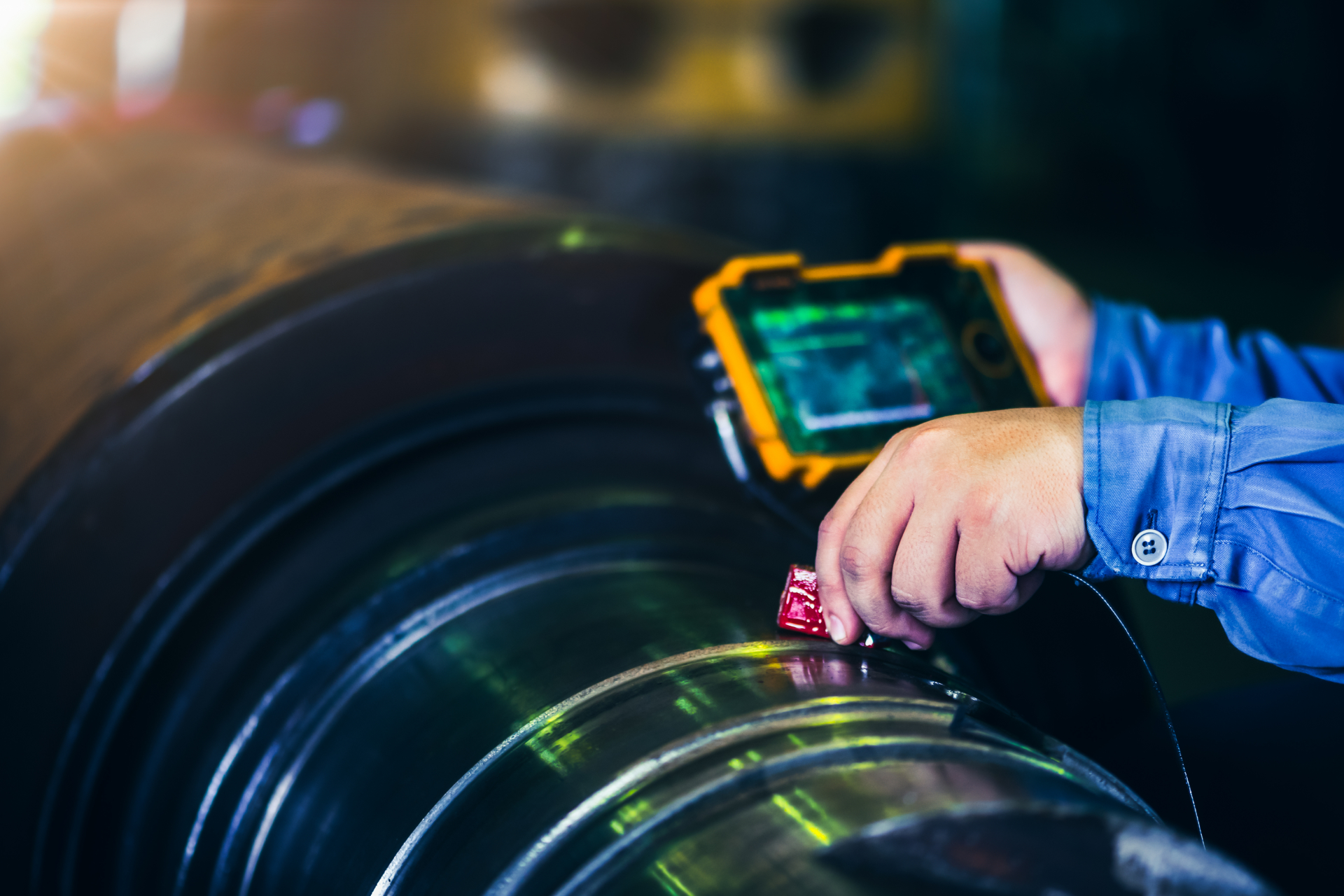Ultrasonic Testing [UT]
Ultrasonic Testing is a method that uses high-frequency sound waves by transmitting them into a material to detect discontinuities within the material.

In general, Ultrasonic Testing uses sound waves to detect subsurface defects in the material tested. One of the most common Ultrasonic Testing techniques is the Pulse Echo. With this technique, inspectors introduce sound into a material and measure the echoes (or sound reflections) produced by imperfections within the material as they are returned to a receiver.
There are also some Advanced NDT Ultrasonic Testing methods:
There are several advantages of UT such as:
- High accuracy in ascertaining reflector position and thus estimating the size and shape of possible defects
- UT has several uses, such as thickness measurement, additional to flaw detection, as well as lamination detection
- Minor preparation is needed
- The UT flaw detection unit provides instantaneous results
- It is sensitive to both surface and subsurface discontinuities
- The depth of penetration for flaw detection or measurement is superior to other NDT methods
- Only single-sided access is needed when the Pulse Echo technique is used
- More expensive than other methods
- Difficult to use on thin materials
- Part Geometry can cause complications
- It needs a relatively smooth surface to couple transducer
- A high degree of operator skill is needed. Hence, the need for trained and certified NDT personnel
- In most examinations, there is no permanent record of the inspection as there is in radiography, however, more recent equipment does offer this facility
- In certain materials, like austenitic steel, the large grain size found in welds can cause attenuation and this may mask defects
- Spurious indications, and the misreading of signals, can result in unnecessary repairs, which is why a validated procedure should be applied when carrying out any ultrasonic examination
Ultrasonic Testing [UT] is ideally suited for the inspection of material structures such as metals, ceramics, plastics, and composites. While denser materials up to concrete can be successfully inspected, the output resolution is usually less defined. Highly porous biological materials such as wood and paper do not react well to Ultrasonic Testing.

Newtron Technologies Ultrasonic Testing can be used to assess a wide array of assets:
- Static & pressurised equipment
- Pipelines
- Tanks
- Buildings
International Organization for Standardization (ISO)
ISO 2400 Non–destructive testing ultrasonic testing specification for calibration block no. 1 (2012)
ISO 7963 Non–destructive testing ultrasonic testing specification for calibration block no. 2 (2006)
ISO 11666 Non–destructive testing of welds ultrasonic testing acceptance levels (2010)
ISO 16809 Non–destructive testing ultrasonic thickness measurement (2012)
ISO 16831 Non–destructive testing ultrasonic testing char acterization and verification of ultrasonic thickness measuring equipment (2012)
ISO 11666 Non–destructive testing of welds ultrasonic testing acceptance levels (2010)
ISO 16809 Non–destructive testing ultrasonic thickness measurement (2012)
ISO 16831 Non–destructive testing ultrasonic testing characterization and verification of ultrasonic thickness measuring equipment (2012)
American Society of Mechanical Engineers (ASME)
ASME Boiler and Pressure Vessel Code, Section V
This information is a collection of references. While we have made every attempt to ensure that information on this site is updated, Newtron is not responsible for any errors or omissions, or for the results obtained from the use of this information. It is not guaranteed to be complete, correct, current, or up to date and may be changed without prior notice.
